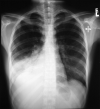Concurrent comparison of epidemiology, clinical presentation and outcome between adult patients suffering from the pandemic influenza A (H1N1) 2009 virus and the seasonal influenza A virus infection
- PMID: 20693151
- PMCID: PMC10017011
- DOI: 10.1136/pgmj.2009.096206
Concurrent comparison of epidemiology, clinical presentation and outcome between adult patients suffering from the pandemic influenza A (H1N1) 2009 virus and the seasonal influenza A virus infection
Abstract
Purpose of study: The demographics, clinical features and outcome of patients with pandemic influenza A (H1N1) 2009 infection were compared with a concurrent cohort of patients with seasonal influenza A infection.
Study design: The clinical and microbiological data of hospitalised adult patients admitted between 29 June and 28 October 2009, with pandemic A (H1N1) 2009 or seasonal influenza A infection, were analysed.
Results: A total of 186 patients including 69 pandemic A (H1N1) and 117 seasonal influenza were analysed. The majority (75%) under 50 years of age had pandemic A (H1N1). Compared with seasonal influenza, pandemic A (H1N1) patients were younger (median age 47 years vs 76 years, p<0.001), less likely to have lower respiratory tract symptoms (46.4% vs 66.7%, p=0.007), but more likely to be obese (5.8% vs 0%, p=0.018), pregnant (7.2% vs 0.9%, p=0.027) or have no underlying predisposing factors (24.6% vs 5.1%, p<0.001). Patients with pandemic A (H1N1) were more likely to receive oseltamivir (91.3% vs 40.2%, p<0.001), but less likely to receive antibiotics (75.4% vs 90.6%, p=0.005). Respiratory failure was the reason for intensive care unit admission for all four patients with pandemic A (H1N1), but only for one of three patients with seasonal influenza. There were no statistical significant differences in the rate of intensive care unit admission or death.
Conclusions: In addition to age, several clinical parameters were different between pandemic A (H1N1) and seasonal influenza. However, since both seasonal and pandemic influenza can lead to significant morbidity and mortality, the impact of pre-existing seasonal influenza should not be underestimated during the pandemic period.
Figures




Similar articles
-
Differences in the epidemiological characteristics and clinical outcomes of pandemic (H1N1) 2009 influenza, compared with seasonal influenza.Infect Control Hosp Epidemiol. 2010 Jul;31(7):676-82. doi: 10.1086/653204. Infect Control Hosp Epidemiol. 2010. PMID: 20500086 Free PMC article.
-
A Concurrent Comparison of the Epidemiology and Clinical Presentation of Patients Hospitalized with Pandemic 2009 (H1N1) Influenza and Seasonal Influenza-A in Sub-himalayan Region of Himachal Pradesh.J Assoc Physicians India. 2019 Mar;67(3):70-74. J Assoc Physicians India. 2019. PMID: 31304711
-
2009 pandemic influenza A (H1N1) in critically ill children in Cincinnati, Ohio.Pediatr Crit Care Med. 2012 May;13(3):e140-4. doi: 10.1097/PCC.0b013e318228845f. Pediatr Crit Care Med. 2012. PMID: 21760562
-
[Pandemic influenza caused by A(H1N1) in pregnant women].Ginecol Obstet Mex. 2010 Feb;78(2):121-7. Ginecol Obstet Mex. 2010. PMID: 20939215 Review. Spanish.
-
Emerging oseltamivir resistance in seasonal and pandemic influenza A/H1N1.J Clin Virol. 2011 Oct;52(2):70-8. doi: 10.1016/j.jcv.2011.05.019. Epub 2011 Jun 17. J Clin Virol. 2011. PMID: 21684202 Review.
Cited by
-
The epidemiological and public health research response to 2009 pandemic influenza A(H1N1): experiences from Hong Kong.Influenza Other Respir Viruses. 2013 May;7(3):367-82. doi: 10.1111/j.1750-2659.2012.00420.x. Epub 2012 Aug 9. Influenza Other Respir Viruses. 2013. PMID: 22883352 Free PMC article. Review.
-
High titer and avidity of nonneutralizing antibodies against influenza vaccine antigen are associated with severe influenza.Clin Vaccine Immunol. 2012 Jul;19(7):1012-8. doi: 10.1128/CVI.00081-12. Epub 2012 May 9. Clin Vaccine Immunol. 2012. PMID: 22573737 Free PMC article.
-
Post-pandemic influenza A/H1N1pdm09 is associated with more severe outcomes than A/H3N2 and other respiratory viruses in adult hospitalisations.Epidemiol Infect. 2019 Nov 28;147:e310. doi: 10.1017/S095026881900195X. Epidemiol Infect. 2019. PMID: 31775940 Free PMC article.
-
Use of intravenous immunoglobulin in critically ill patients.Curr Infect Dis Rep. 2014 Dec;16(12):447. doi: 10.1007/s11908-014-0447-4. Curr Infect Dis Rep. 2014. PMID: 25388018
-
Assessment of population susceptibility to upcoming seasonal influenza epidemic strain using interepidemic emerging influenza virus strains.Epidemiol Infect. 2019 Sep 26;147:e279. doi: 10.1017/S0950268819001717. Epidemiol Infect. 2019. PMID: 31556360 Free PMC article.
References
-
- Simonsen L, Clarke MJ, Schonberger LB, et al. . Pandemic versus epidemic influenza mortality: a pattern of changing age distribution. J Infect Dis 1998;178:53–60. - PubMed
-
- Chowell G, Bertozzi SM, Colchero MA, et al. . Severe respiratory disease concurrent with the circulation of H1N1 influenza. N Engl J Med 2009;361:674–9. - PubMed
-
- Webb SA, Pettila V, Seppelt I, et al. . Critical care services and 2009 H1N1 influenza in Australia and New Zealand. N Engl J Med 2009;361:1925–34. - PubMed
-
- Centers for Disease Control and Prevention (CDC). Surveillance for pediatric deaths associated with 2009 pandemic influenza A (H1N1) virus infection—United States, April–August 2009. MMWR Morb Mortal Wkly Rep 2009;58:941–7. - PubMed
Publication types
MeSH terms
Substances
LinkOut - more resources
Full Text Sources
Medical
Research Materials

